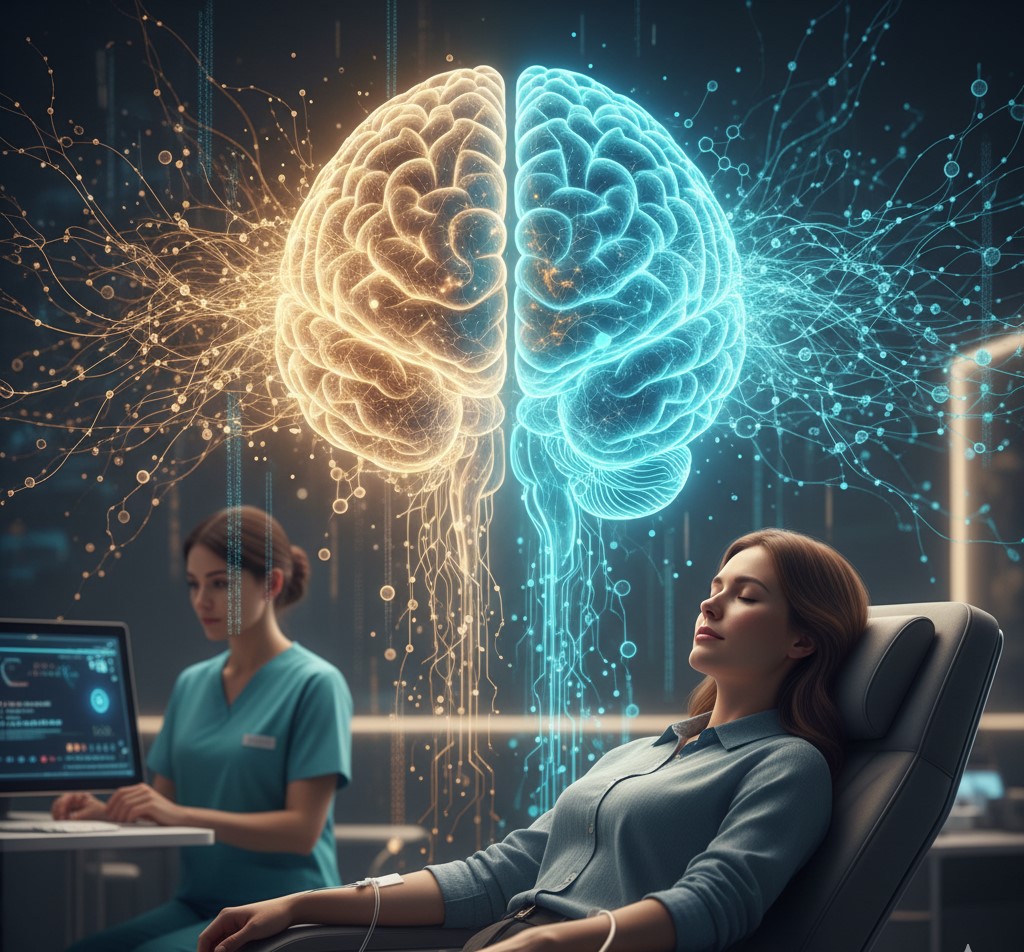In recent years, ketamine, a well-known anesthetic and analgesic, has attracted attention not only for its sedative properties but also for its potential to induce neuroplasticity – the brain’s remarkable ability to reorganize and form new neural connections. In other words, the brains ability to grow. This unique characteristic of ketamine has sparked interest in the scientific and medical communities as researchers explore its potential applications in treating various mental health disorders and promoting brain health.
Understanding Neuroplasticity:
Neuroplasticity, often referred to as the brain’s “plastic” or malleable nature, is the process by which the brain adapts to experiences, learns new information, and reorganizes itself over time. This phenomenon involves the growth of new neuronal connections, the strengthening or weakening of existing synapses, and even the generation of new neurons, a process known as neurogenesis.
Ketamine and NMDA Receptor Modulation:
The key to ketamine’s impact on neuroplasticity lies in its interaction with the N-methyl-D-aspartate (NMDA) receptors. As an NMDA receptor antagonist, ketamine modulates the activity of glutamate, a major excitatory neurotransmitter in the brain. This modulation triggers a cascade of events that contribute to the growth of new neuronal connections and synaptic plasticity.
-
Enhanced Synaptic Plasticity:
Ketamine’s influence on NMDA receptors leads to increased release of brain-derived neurotrophic factor (BDNF), a protein crucial for the growth, survival, and maintenance of neurons. Elevated BDNF levels contribute to enhanced synaptic plasticity, facilitating the strengthening of existing connections and the formation of new ones.
“The antidepressive effects of ketamine and psychedelics are both suggested to result from changes in neuroplasticity… Frontiers (2021)”
-
Stimulation of Neurogenesis:
Recent studies suggest that ketamine may also stimulate neurogenesis in certain regions of the brain, such as the hippocampus. Neurogenesis involves the creation of new neurons, and this process is fundamental to cognitive functions like learning and memory.
-
Balancing Excitatory and Inhibitory Signaling:
Ketamine’s impact on NMDA receptors not only enhances excitatory signaling but also influences the balance between excitatory and inhibitory neurotransmission. This balance is crucial for maintaining optimal brain function and preventing excessive neural activity associated with conditions like depression and anxiety.
Applications in Mental Health Treatment:
The potential of ketamine to promote neuroplasticity has led to its exploration as a treatment for various mental health disorders, including depression, anxiety, and post-traumatic stress disorder (PTSD). Rapid-acting antidepressant effects observed in some studies are believed to be linked to the neuroplastic changes induced by ketamine.
-
Treatment-Resistant Depression:
Ketamine has shown promising results in individuals with treatment-resistant depression, where traditional antidepressants have proven ineffective. The rapid onset of its antidepressant effects suggests a potential connection to the induction of neuroplastic changes.
-
Post-Traumatic Stress Disorder (PTSD):
Emerging research also suggests that ketamine may have therapeutic potential for individuals with PTSD, possibly through its influence on neuroplasticity and memory reconsolidation.
Ketamine’s role in promoting neuroplasticity represents a captivating avenue of research with potential implications for mental health treatment. While its mechanisms are still being elucidated, the growing body of evidence suggests that ketamine’s impact on NMDA receptors plays a crucial role in fostering the growth of new neuronal connections. As researchers continue to unravel the intricacies of ketamine’s effects on the brain, the prospect of harnessing its neuroplasticity-inducing properties opens new possibilities for innovative therapeutic interventions in the realm of mental health. However, it is essential to approach these findings with caution, recognizing the need for further research to fully understand the long-term implications and potential applications of ketamine-induced neuroplasticity.
References:
Front. Psychiatry, 10 September 2021
Sec. Psychopathology
Volume 12 – 2021 | https://doi.org/10.3389/fpsyt.2021.724606










 Daytryp Health has taken
Daytryp Health has taken  The
The 